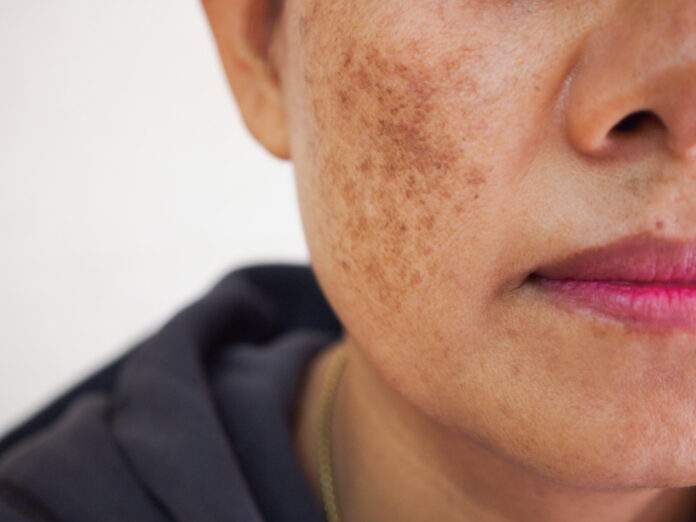Introduction
Brown spots on the skin, often called age spots, sun spots, or liver spots, are a common concern for people of all ages. While they’re usually harmless, they can affect your confidence and make your skin look older than it really is. Fortunately, advances in dermatology have made it easier than ever to reduce the appearance of these spots or even get rid of them entirely. If you’re wondering how to tackle brown spots safely and effectively, you’re in the right place. This article provides expert guidance based on what dermatologists recommend.
What Are Brown Spots and Why Do They Appear?
Brown spots are flat, pigmented areas on the skin that range in color from light tan to dark brown. They vary in size and typically appear on areas of the skin most exposed to the sun, such as the face, hands, shoulders, and arms. These spots develop over time as a result of increased melanin production, the pigment that gives skin its color. While they are more common in older adults, younger people can also develop brown spots due to sun exposure or hormonal changes.
Common Causes of Brown Spots
There are several factors that can lead to the development of brown spots. The most common cause is sun exposure. Ultraviolet (UV) rays stimulate the production of melanin, which can accumulate in certain areas and form dark patches. Hormonal changes, particularly during pregnancy or menopause, can also trigger increased melanin production. In some cases, brown spots may develop after inflammation or injury to the skin, such as acne or a cut. Genetics also plays a role, as some people are more prone to pigmentation than others.
When Should You Be Concerned?
While most brown spots are benign and purely cosmetic, it’s essential to know when a spot might be something more serious. Dermatologists advise paying attention to any spot that changes in size, shape, color, or texture. If a spot begins to bleed, itch, or becomes painful, it’s crucial to have it evaluated by a professional. Early detection of skin conditions like melanoma can make a significant difference in treatment outcomes. When in doubt, it’s always best to get a dermatologist’s opinion.
How Dermatologists Diagnose Brown Spots
To determine whether a brown spot is harmless or something that requires medical attention, dermatologists perform a thorough skin examination. They may use a dermatoscope, a special magnifying tool that helps them see the spot in more detail. In some cases, they might perform a biopsy to analyze the tissue under a microscope. This helps them rule out skin cancers or other skin disorders. Accurate diagnosis is essential for choosing the right treatment plan, whether for cosmetic reasons or health concerns.
Treatment Options Recommended by Dermatologists
Once a brown spot is identified as benign, there are several dermatologist-approved treatments available to reduce its appearance. One of the most common options is topical treatments that contain ingredients like hydroquinone, retinoids, vitamin C, or kojic acid. These help lighten pigmentation over time and improve skin tone. For faster results, dermatologists may recommend in-office procedures such as chemical peels, microdermabrasion, or laser therapy. These treatments work by removing the outer layers of skin and encouraging new, evenly pigmented skin to form. Cryotherapy, which involves freezing the spot with liquid nitrogen, is another method used for certain types of pigmentation.
Skincare Routines to Help Fade Brown Spots
Maintaining a consistent and dermatologist-approved skincare routine can significantly help in fading brown spots. Cleansing the skin with a gentle cleanser helps remove dirt and dead skin cells that can worsen pigmentation. Using a broad-spectrum sunscreen with at least SPF 30 daily is crucial, as UV exposure can darken existing spots and lead to new ones. Incorporating a brightening serum with ingredients like niacinamide or alpha arbutin can enhance your skin’s natural radiance. Moisturizers with antioxidants also support skin repair and improve overall tone. Patience is key, as it can take several weeks or months to see noticeable results.
Prevention Tips to Avoid Future Spots
Preventing new brown spots on skin removal is just as important as treating existing ones. The most effective prevention strategy is sun protection. This means wearing sunscreen daily, even on cloudy days or during winter. Wearing hats, sunglasses, and protective clothing when outdoors can offer additional protection. Avoiding peak sun hours, typically between 10 a.m. and 4 p.m., can reduce UV exposure. Staying hydrated and maintaining a balanced diet rich in vitamins and antioxidants supports healthy skin from within. Regular skin checks and dermatologist visits can catch any new or unusual spots early.
Myths About Brown Spots
There are many misconceptions about brown spots and how to treat them. One common myth is that lemon juice can lighten spots overnight. While lemon has some natural bleaching properties, applying it directly to the skin can cause irritation or worsen pigmentation, especially when exposed to sunlight. Another myth is that brown spots only affect older people. In reality, sun exposure and skin injuries can cause pigmentation in people of all ages. Some also believe that all brown spots are harmful, but most are benign and purely a cosmetic concern. Trusting professional advice over internet hacks is essential for safe and effective results.
Final Thoughts
Brown spots Near Me on the skin can be a frustrating cosmetic concern, but they are usually not dangerous. Understanding what causes them, how to treat them, and how to prevent them is the first step toward clearer, healthier-looking skin. With the right combination of dermatologist-recommended treatments and daily skincare habits, you can reduce or eliminate the appearance of brown spots. Always remember that professional guidance is invaluable when it comes to your skin. If you’re ever in doubt, don’t hesitate to consult a dermatologist for tailored advice and treatment options. Your skin deserves expert care—and so do you.
Frequently Asked Questions (FAQ)
Can brown spots turn into skin cancer?
Most brown spots are benign and not linked to skin cancer. However, any spot that changes rapidly in size, color, or texture should be evaluated by a dermatologist to rule out malignancy.
How long does it take to see results from brown spot treatments?
The timeline varies depending on the treatment method and your skin type. Topical treatments can take several weeks to months, while procedures like laser therapy or chemical peels may show faster results.
Are over-the-counter products effective for brown spots?
Some over-the-counter products containing ingredients like niacinamide, vitamin C, or retinol can help fade mild pigmentation. However, professional treatments usually offer more noticeable and lasting results.
Is it safe to treat brown spots at home?
Mild spots can sometimes be managed with home skincare routines, but it’s important to avoid unproven remedies. Consulting a dermatologist ensures you’re using safe and effective methods tailored to your skin.
Can brown spots come back after treatment?
Yes, especially if you continue to have unprotected sun exposure. Consistent sunscreen use and a good skincare routine are essential to prevent recurrence.































